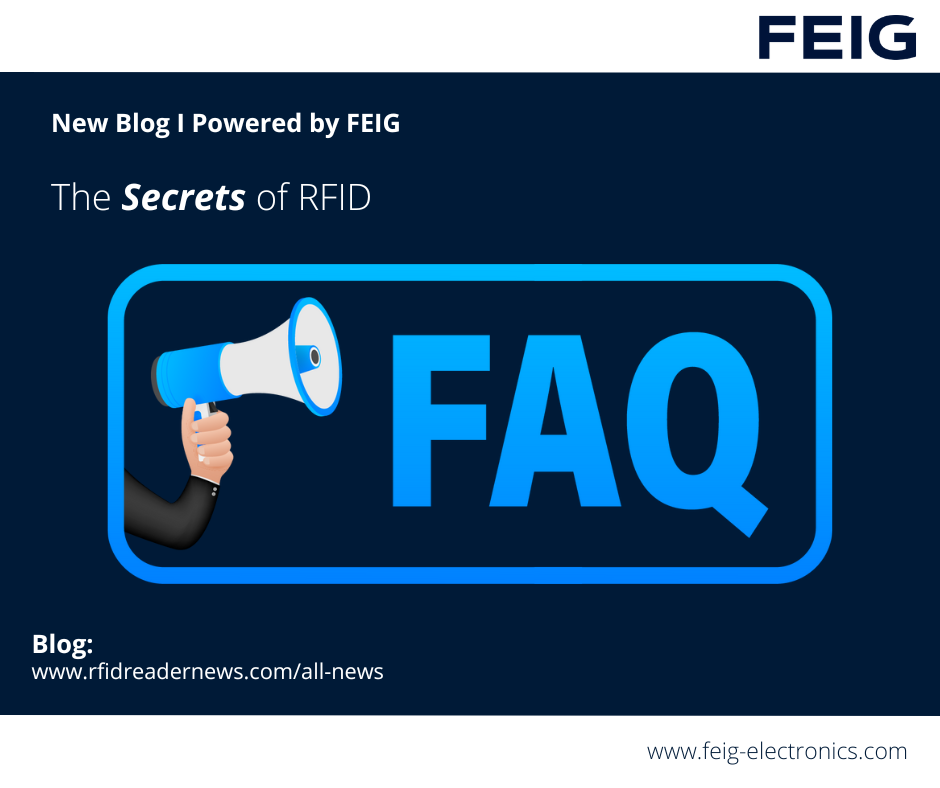
Our RFID Frequently Asked Questions (FAQ) guide is designed to provide comprehensive answers to common questions about Radio-Frequency Identification technology. In this FAQ, we’ll cover topics ranging from the basics of RFID technology and its advantages to common challenges. Whether you’re new to RFID or seeking solutions to specific issues, this guide aims to provide valuable insights to help you navigate the world of RFID effectively.
RFID, or Radio-Frequency Identification, is a technology that uses radio waves to wirelessly transmit data between an RFID tag attached to an object and an RFID reader. These tags contain electronically stored information that can uniquely identify the tagged item. When the RFID tag comes within range of the reader’s radio waves, it responds by transmitting its stored data, including details such as product information, serial numbers, or other relevant data. RFID technology enables automatic identification and tracking of items, providing benefits such as improved inventory management, enhanced supply chain visibility, and streamlined logistics processes across various industries.
RFID uses radio waves to communicate between an RFID tag and an RFID reader wirelessly. The process begins when the RFID reader emits radio waves via an antenna. When an RFID tag enters the reader’s vicinity, it receives these radio waves, inducing a small electrical current within the tag’s antenna. This current powers the tag’s circuitry, transmitting stored data back to the reader via radio waves. The reader captures this data and forwards it to a computer system for processing and analysis. Through this interaction, RFID enables the automatic identification and tracking of tagged items, offering benefits such as efficient inventory management, enhanced supply chain visibility, and streamlined logistics operations in various industries.
RFID technology is versatile and can be used by various industries and organizations.
Ultimately, any sector seeking to improve efficiency, visibility, and control over their assets and operations can benefit from integrating RFID technology into their workflows.
RFID offers numerous advantages across various industries.
RFID and barcode technology are used for automatic identification and tracking of items, but they differ in how they accomplish this task. Barcodes consist of a series of lines and spaces printed on a label, which a barcode reader scans to retrieve information stored in a database. In contrast, RFID uses radio waves to transmit data between an RFID tag and a reader wirelessly. RFID tags can be read without line-of-sight and store more information than barcodes. Additionally, RFID technology enables multiple tags to be read simultaneously, whereas barcodes must be scanned individually. While both technologies have advantages, RFID offers greater flexibility, security, efficiency, and automation, particularly in applications requiring high-speed data capture or tracking large numbers of items.
RFID (Radio-Frequency Identification) operates at different frequencies, each with its own characteristics and applications. The main RFID frequencies are Low Frequency (LF), High Frequency (HF), and Ultra High Frequency (UHF).
Each frequency has strengths and weaknesses, and the choice depends on factors such as read range requirements, environmental conditions, and regulatory considerations.
The cost of implementing RFID technology varies depending on several factors, including the type of RFID system, the scale of deployment, and specific application requirements. Generally, passive RFID systems, which use tags without internal power sources, are more cost-effective compared to active RFID systems that utilize battery-powered tags. The expenses typically include RFID tags, readers, antennas, infrastructure setup, software integration, and ongoing maintenance. While there is an initial investment, many businesses find that the benefits of RFID, such as improved inventory management, enhanced supply chain visibility, and increased operational efficiency, often justify the cost since ROI can be gained in a matter of months. Additionally, advancements in RFID technology and increased adoption in various industries have led to more affordable solutions.
Implementing RFID (Radio-Frequency Identification) technology comes with its set of challenges.
Despite these challenges, overcoming them can lead to significant benefits in terms of operational efficiency, visibility, and customer service.
RFID technology may not be working due to various reasons. Common issues include:
Addressing these potential issues through careful troubleshooting and system optimization can help resolve RFID functionality problems.
When encountering issues with an RFID system, it’s advisable to first contact the system vendor or manufacturer for technical support. They often have dedicated support teams or resources available to assist with troubleshooting and resolving issues specific to their products. Additionally, reaching out to experienced RFID integrators or consultants can provide valuable expertise and guidance in diagnosing and resolving system problems. In some cases, internal IT or engineering teams may also be able to troubleshoot and address issues with the RFID system, especially if they have relevant expertise or experience with similar technologies. By collaborating with these resources, businesses can efficiently identify and resolve issues to minimize disruptions and ensure the smooth operation of their RFID systems.
As you explored the contents of this FAQ, we hope you have gained a deeper understanding of RFID technology and how it can benefit your organization. Whether you’re considering implementing or expanding RFID systems, troubleshooting existing setups, or simply seeking to expand your knowledge, our goal is to empower you with the information needed to make informed decisions and overcome challenges. If you have further questions, reach out to our experts!
Session expired
Please log in again. The login page will open in a new tab. After logging in you can close it and return to this page.